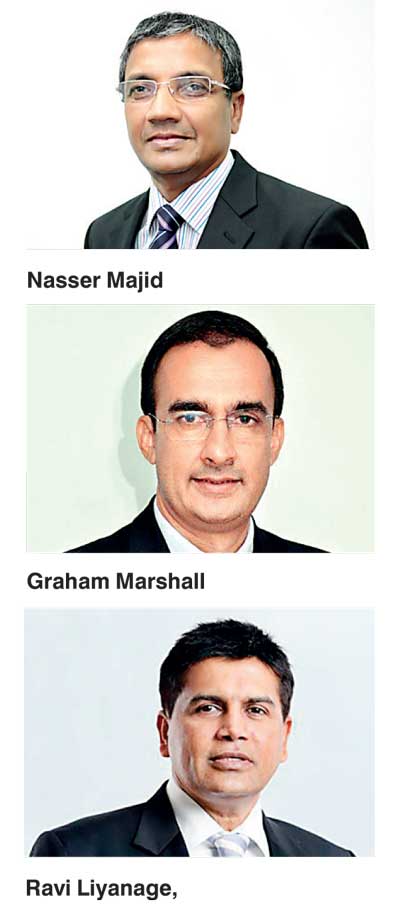Monday Dec 08, 2025
Monday Dec 08, 2025
Monday, 27 July 2015 00:00 - - {{hitsCtrl.values.hits}}

With focus on enhancing proper applicant entries for the scheduled SLIM Brand Excellence Awards 2015, the ‘High Octane Workshop’ was conducted at the Sri Lanka Institute of Marketing (SLIM) on 7 and 9 July, with the expert presence of Graham Marshall, GM-Vehicle Refinishes, AkzoNobel Paints Lanka (Head of Panel of Judges – 2013) and Nasser Majid, CEO – Softlogic Retail Ltd. (Head of Panel of Judges – 2015) respectively.
Apart from this, a dedicated and customised workshop was held on 16 July targeting small and medium enterprises in Sri Lanka. This was conducted by Ravi Liyanage, CEO, TVS Lanka Ltd. The session was presented in Sinhala, encouraging SMEs to start adhering to best practices.
The aim of the workshop was to present a straightforward approach on how to create a credible and winning entry with focus emphasised on brand intent. The main awards to be presented at this year’s event were disclosed as the ‘Product Brand of the Year’ and the ‘Service Brand of the Year’.
A host of special category awards will also include Innovative Brand of the Year, Local Brand of the Year, New Entrant Brand of the Year, Export Brand of the Year, CSR Brand of the Year as well as the newly-added category, Online Brand of the Year, to name a few.
The workshop mainly elaborated the need to provide applicants with an understanding on how to present their entries based on brand intent, brand content, brand process and brand performance.
Shedding light on the concept of brand intent, Majid said: “Applicants should carefully adhere to the simple rule of editing their entries prior to submission. They should steer away from using unnecessary facts or assumptions and focus stringently on aiming for the maximum marks for each sub section. An initial description of their industry aimed for the judges understanding is definitely a plus.”
Marshall, who conducted the first workshop, emphasised on ‘Porter’s five forces model’, where applicants were also encouraged to ensure that their strategies follow the model whilst helping them to bring out their brand positioning.
“Make use of research data as much as possible without compromising on the entry’s credibility. Also adhering to guideline templates from the Market Research Society of Sri Lanka (MRRSL) will also prove helpful,” Marshall acknowledged.
Marks were allocated in the form of 15% on Brand Intent, 15% for Brand Content, 40% for Brand Process and 30% for Brand Performance. Adherences to basic rules was heavily encouraged along with an emphasis for applicants to limit their approaches when it came to the entry kit and not extend to multiple pages and loading judges with needless and indistinct data in the process.